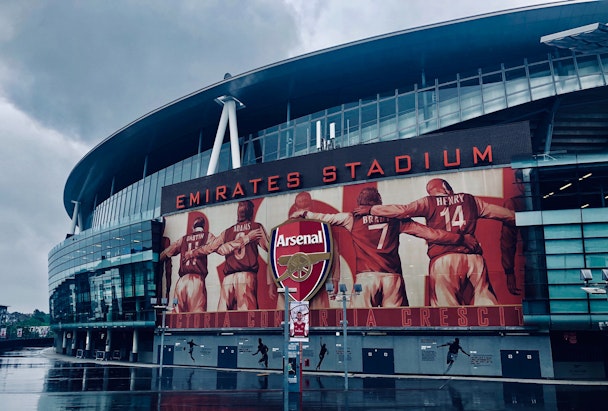Sports clubs and leagues are upping their game by redesigning fan relationships
It’s hard to think of any organization with more organic brand love than sports clubs and leagues. But – as Louis Sheppard, experience director at Unrvld, tells us for The Drum’s Sports Marketing Deep Dive – they’ve only recently started to make the most of that enormous resource through digital channels. What can the rest of us learn from sports brands’ recent successes?

How are leagues and clubs revolutionizing the fan relationship? / Who’s Denilo? via Unsplash
Historically, sports clubs and organizations have lagged behind other sectors in their approach to branding and marketing. But in the last decade, this has changed. Sports brands around the world are developing sophisticated branding and communication systems, acting more as competitive brands and fighting for commercial market share and fan attention.
Digital, and the direct access it offers to audiences worldwide, has been the main driver of this change. No longer limited or fully controlled by broadcast and sponsor relationships, these long-standing entities are unleashing their creative and expressive powers.
Thinking back to watching football throughout the 80s and into the 00s, clubs have always had strong identities. The style of football they played, success in competitions, the occasional marquee player signing and the media narrative all contributed to the club’s identity.
Reclaiming identity
This strong sense of identity only really lived in the minds of fans. They imbued their clubs with a collective, shared, informal set of characteristics, often tied to historical, social and local meaning. No one ever used the word ‘brand’ to describe a club. The clubs themselves were passive in forming these identities. They might have been in control of footballing decisions, but these were focused on the grind of competition, rather than strategy connected to an identity.
Marketing and branding decisions were left to others – in most cases sponsors, which used the creative capital of clubs to promote their own products with massive advertising campaigns. In the meantime, clubs’ own communications were limited to little more than the matchday program.
Today, the landscape couldn’t look more different. Clubs have extensive brand systems and guidelines, with social media channels brimming with slick, branded content. Websites and apps connect fans to all aspects of the club. Across the entire sector, clubs, governing bodies and leagues are all embracing the power of brand potential.
This major change is recent. When Unrvld first started working with Southampton Football Club in 2015, it had an ambition for its website to match its emerging brand and fan engagement strategy.
When we started to survey the online sports landscape, we couldn’t find any good examples of sports brands with a well-executed digital presence. Today most sports brands have a comprehensive online identity and strongly articulated brand language applied across multiple channels.
Top of the league
Look at the rebranding of the Premier League in 2016. By dropping its main sponsor, the brand was able to take full control of how it presented itself. It found a new, expressive way to productize and position the league for its ever-growing worldwide audience.
The key consideration was ensuring that the visual identity broke away from sports marketing clichés (not a player silhouette in sight). The brand then needed to be scaled and applied across broadcast and online channels, with the digital-first redrawing of the logo making it suitable for screens.
This approach has been taken up by other competitors around the world that saw the power of branding to connect with fans in a way that supplemented and built on the core ‘match’ product. At Unrvld, we’ve recently launched websites and apps for EuroLeague Basketball and the United Rugby Championship, following major investments in their branding systems to codify unique identities and communicate them creatively to their audiences.
We’re seeing the idea of the brand as a guiding principle within sports organizations. It’s no longer just an aspect of fan-facing communications. Our website and app designed for Crystal Palace FC launched in the same season it appointed Patrick Viera as manager – a great example of club strategy to align the branding and design of all aspects to the footballing vision and style play.
Similarly, with our client The R&A, a key strategy for its new website was to use the design, content and overall brand experience to create a significant shift in how people perceived its brand and the game of golf. The new platform challenges ideas of who the game is for, widening participation and encouraging inclusivity – all objectives that the governing body has at the very heart of its mission.
Digital opportunity is driving these changes, allowing brands to talk directly to their audiences, and in the process ask themselves who they are and what they want to stand for.
Check out The Drum’s latest Deep Dive, The New Sports Marketing Playbook, and learn the tactics employed by the world’s biggest sports organizations and their star athletes to stay at the top of their game.
Content by The Drum Network member:

UNRVLD
Our digital expertise put value creation at the heart of everything we do. We deliver the outcomes our clients need to become more than just better. Being unrivalled...
Find out more
